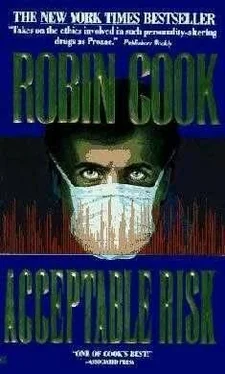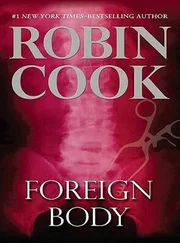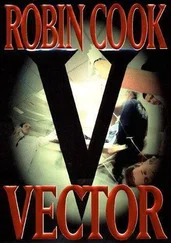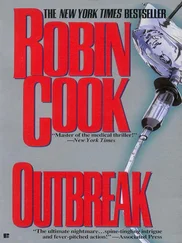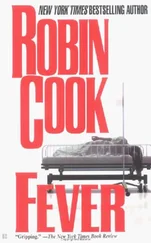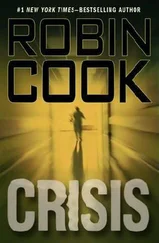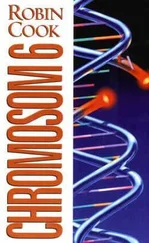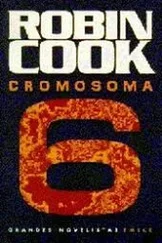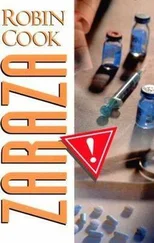Robin Cook - Acceptable Risk
Здесь есть возможность читать онлайн «Robin Cook - Acceptable Risk» весь текст электронной книги совершенно бесплатно (целиком полную версию без сокращений). В некоторых случаях можно слушать аудио, скачать через торрент в формате fb2 и присутствует краткое содержание. Жанр: Триллер, на английском языке. Описание произведения, (предисловие) а так же отзывы посетителей доступны на портале библиотеки ЛибКат.
- Название:Acceptable Risk
- Автор:
- Жанр:
- Год:неизвестен
- ISBN:нет данных
- Рейтинг книги:4 / 5. Голосов: 1
-
Избранное:Добавить в избранное
- Отзывы:
-
Ваша оценка:
- 80
- 1
- 2
- 3
- 4
- 5
Acceptable Risk: краткое содержание, описание и аннотация
Предлагаем к чтению аннотацию, описание, краткое содержание или предисловие (зависит от того, что написал сам автор книги «Acceptable Risk»). Если вы не нашли необходимую информацию о книге — напишите в комментариях, мы постараемся отыскать её.
Acceptable Risk — читать онлайн бесплатно полную книгу (весь текст) целиком
Ниже представлен текст книги, разбитый по страницам. Система сохранения места последней прочитанной страницы, позволяет с удобством читать онлайн бесплатно книгу «Acceptable Risk», без необходимости каждый раз заново искать на чём Вы остановились. Поставьте закладку, и сможете в любой момент перейти на страницу, на которой закончили чтение.
Интервал:
Закладка:
To Kim, the biggest irony of the construction project was that her father was thoroughly impressed with her because of the work on the lab. Kim did not let on that she was not involved in that part of the renovation, and that it had not been her idea.
On every visit to the compound Kim spent at least some time in the castle, painstakingly sifting through the hoard of dusty documents and books. The results were disappointing. Although she’d been encouraged by the discovery of the three letters, twenty-six hours of subsequent search had yielded nothing of comparable value. Consequently, on Thursday the 11th she decided to follow the lead she had, and she brought the letter from Increase Mather to Boston, having built up the courage to approach Harvard.
After leaving work on August 12th, Kim walked to the corner of Charles and Cambridge streets and climbed the stairs to the MTA station. After the experience at the state-house, which she now knew was a totally hopeless venture since Ronald had never petitioned the Governor, Kim was not optimistic about finding the evidence against Elizabeth at Harvard. Not only did she think the chances of the university still having such material in its possession slim, she fully expected people at the university to think of her as some kook. Who else would come on a quest for a three-hundred-year-old object, the nature of which was never specified in what few tangible references to it she had?
While waiting for the train, Kim almost turned back several times, but each time she reminded herself that this was her only lead. Consequently she felt impelled to follow up on it, no matter what response it might elicit.
Exiting the underground station, Kim found herself in the usual bustle of Harvard Square. But once she’d crossed Massachusetts Avenue and entered the campus, the noise of the traffic and crowds was muffled with startling rapidity. As she walked along the tranquil, tree-shaded walkways and ivy-covered red brick walls, she wondered what the campus had looked like in the seventeenth century, when Ronald Stewart had attended. None of the buildings she was passing looked quite that old.
Recalling Edward’s comment about the Widener Library, Kim had decided to try there first. She mounted the broad steps and passed between its impressive columns. She was feeling nervous and had to encourage herself to continue. At the information desk she made a vague request about speaking with someone concerning very old objects. She was sent to Mary Custland’s office.
Mary Custland was a dynamic woman in her late thirties, stylishly dressed in a dark blue suit, white blouse, and colorful scarf. She hardly fit Kim’s stereotypical image of a librarian. Her title was Curator of Rare Books and Manuscripts. To Kim’s relief she was gracious and warm, immediately asking how she could be of help.
Kim produced the letter, handed it to Mary, and mentioned that she was a descendant of the addressee. She started to explain what she wanted, but Mary interrupted her.
“Excuse me,” she said. She was startled. “This letter is from Increase Mather!” As she spoke, she reverentially moved her fingers to the very periphery of the page.
“That’s what I was explaining,” Kim said.
“Let me get Katherine Sturburg in here,” Mary said. She carefully laid the letter on her blotter and picked up the phone. While she was waiting for the connection to go through, she told Kim that Katherine specialized in seventeenth-century material and was particularly interested in Increase Mather.
After making her call, Mary asked Kim where she’d gotten the letter. Kim again started to explain, but then Katherine arrived. She was an older woman with gray hair; a pair of reading glasses resided permanently on the end of her nose. Mary introduced them and then snowed the letter to Katherine.
Katherine used just the tip of her finger to move the letter around so she could read it. Kim was immediately embarrassed by her own cavalier handling of it.
“What do you think?” Mary asked when Katherine was finished reading.
“It’s definitely authentic,” Katherine said. “I can tell by both the handwriting and the syntax. It’s fascinating. It references both William Brattle and John Leverett. But what is this evidence he’s discussing?”
“That’s the question,” Kim said. “That’s why I’m here. I’d started out trying to learn something about my ancestor Elizabeth Stewart, and that goal has evolved to solving this puzzle. I was hoping Harvard could help, since the evidence, whatever it was, was left here.”
“What is the association with witchcraft?” Mary asked.
Kim explained that Elizabeth had been caught up in the witchcraft trials in Salem and that the evidence-whatever it was-had been used to convict her.
“I should have guessed about the Salem connection when I saw the date,” Katherine said.
“The second time Mather refers to it, he describes it as ‘Elizabeth’s legacy,’” Mary pointed out. “That’s a curious phrase. It suggests to me something Elizabeth either made herself or acquired with some degree of effort or wealth.”
Kim nodded. She then explained her idea about its being a book or writings although she admitted it could have been anything associated in those days with sorcery or the occult.
“I suppose it could have been a doll,” Mary said.
“I’d thought of that,” Kim said.
The two librarians conferred as how best to access the enormous resources of the library. After a short discussion, Mary sat down at her terminal and entered the name 'elizabeth stewart'.
For a minute no one spoke. The only movement in the room was the blinking of the cursor in the blank screen as the computer searched the extensive data banks. When the monitor flashed alive with multiple listings, Kim’s hopes rose. But they were short-lived. All the Elizabeth Stewarts listed were in the nineteenth and twentieth centuries and bore no relation to Kim.
Mary then tried 'ronald stewart', but got similar results. There were no seventeenth-century references. Next Mary tried to cross-reference with 'increase mather'. There was a wealth of material, but no intersections with the Stewart family listed.
“I’m not surprised,” Kim said. “I wasn’t optimistic coming here. I hope you didn’t find this a bother.”
“Quite the contrary,” Katherine said. “I’m pleased you showed us this letter. We’d certainly like to make a copy of it for our files, if you wouldn’t mind.”
“Of course not,” Kim said. “In fact, when I’m finished with my mini-crusade I’ll be happy to donate the letter to the library.”
“That would be very generous,” Mary said.
“As the archivist most interested in Increase Mather I’ll be happy to go over my extensive files for the name of Elizabeth Stewart,” Katherine promised. “Whatever the object was, there should be some reference to it, since Mather’s letter confirms it was given to Harvard. The debate about spectral evidence in the Salem witchcraft trials had been ferocious, and we have extensive material on it. I have a feeling that’s what Mather is indirectly referring to in your letter. So there is still a chance I could find something.”
“I’d appreciate any effort you made,” Kim said. She gave her phone number both at work and at home.
The librarians exchanged knowing glances. Mary then spoke up. “I don’t want to be a pessimist,” she said, “but we should warn you that the chances of finding the evidence itself are minuscule, no matter what it was. There was a great tragedy here at Harvard on January 24, 1764. At that time Old Harvard Hall was being used by the General Court because of a smallpox epidemic in Boston. Unfortunately a fire left in the library on that cold, snowy night sparked a conflagration that destroyed the building and all its priceless contents. That included all the portraits of the college’s presidents and benefactors as well as most of its five-thousand-volume library. I know a lot about the episode because it was the worst disaster in the library’s history. And not only did the library lose books: there was also a collection of stuffed animals and birds and, most curious of all, a collection that was referred to as ‘a repository of curiosities.’”
Читать дальшеИнтервал:
Закладка:
Похожие книги на «Acceptable Risk»
Представляем Вашему вниманию похожие книги на «Acceptable Risk» списком для выбора. Мы отобрали схожую по названию и смыслу литературу в надежде предоставить читателям больше вариантов отыскать новые, интересные, ещё непрочитанные произведения.
Обсуждение, отзывы о книге «Acceptable Risk» и просто собственные мнения читателей. Оставьте ваши комментарии, напишите, что Вы думаете о произведении, его смысле или главных героях. Укажите что конкретно понравилось, а что нет, и почему Вы так считаете.
